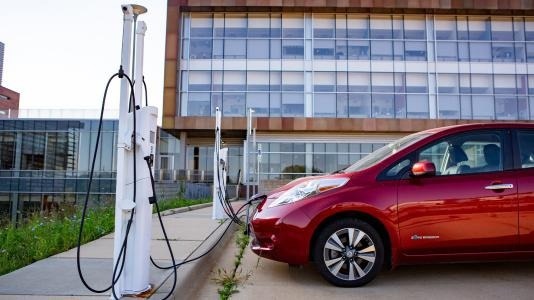Apr 30 2024Reviewed by Lexie Corner
The US Department of Energy’s (DOE) Argonne National Laboratory has developed a new tool that allows drivers to estimate, at the ZIP code level, how much they would save on fuel costs by driving a plug-in hybrid (PHEV) or a battery electric vehicle (BEV).
 Vehicle plugged into a charging station. Image Credit: Argonne National Laboratory.
Vehicle plugged into a charging station. Image Credit: Argonne National Laboratory.
Driving Electric: Local Fuel Savings Calculator is a free tool that anybody can use. Drivers can enter their ZIP code or state, as well as vehicle specifications such as size, model year, tank capacity, fuel economy, and annual miles. The application then offers estimates for how much drivers can save.
Driving a plug-in electric vehicle rather than a conventionally fueled vehicle results in fuel cost savings and reduced greenhouse gas (GHG) emissions in more than 99 % of U.S. ZIP codes. With this new tool, drivers can enter information about their vehicle, their location, annual mileage, and local fuel prices and see how much they’re saving per mile, per tank, and per year.
Yan (Joann) Zhou, Principal Transportation Systems Analyst, Argonne National Laboratory
The recent technical report from Argonne, Adoption of Plug-In Electric Vehicles: Local Fuel Use and Greenhouse Gas Emissions Reductions Across the US, served as the foundation for the EV savings calculator. Through this report, scientists reveal new information that was previously unclear: how a person's savings and ability to lower GHG emissions might vary based on where they reside and local factors like fuel and power costs.
The researchers discovered that operating a BEV can result in considerable yearly savings of up to $2,200 when compared to operating a gas vehicle of equal size. The largest fuel savings were observed in places with high annual miles driven, low power rates, high gasoline prices, and preferences for larger vehicles. The researchers also discovered that driving a PHEV can result in yearly savings of up to $1,500 when compared to driving a similar gas vehicle.
The “well-to-wheels” method, which takes into account a vehicle’s energy consumption over its whole life cycle, is used in the report to investigate the effects of greenhouse gas emissions. Researchers discovered that for every 10,000 kilometers traveled, BEV users could save nearly five tons of carbon dioxide equivalent.
When more individuals choose to drive BEVs, they are not only contributing to cleaner air—they can also enjoy significant cost savings for themselves. With this tool, individuals can now see just how much they can save based on where they live and how much they drive.
Xinyi Wu, Study Lead Author and Transportation Systems Analyst, ESIA Division
DOE’s Office of Policy and Vehicle Technologies Office in the Office of Energy Efficiency and Renewable Energy funded the project.
Source: https://www.anl.gov/